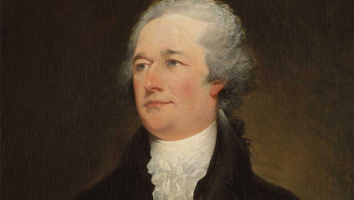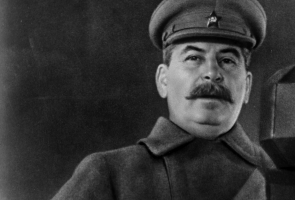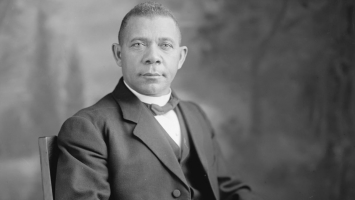Top 8 Interesting Facts About Alexander Graham Bell
Alexander Graham Bell was a scientist and engineer from Scotland. On March 3, 1847, he was born in Edinburgh, Scotland. Melville James Bell and Edward Charles ... read more...Bell, his two brothers, died of tuberculosis. The following are the top interesting facts about Alexander Graham Bell.
-
Bell's father was a deaf elocution teacher, and his mother Eliza was extremely hard of hearing. Bell's dedication to researching the physiology of speech and instructing deaf students was thus not unexpected. He was a teacher at the American School for the Deaf in Hartford, Connecticut, the Clarke School for the Deaf in Northampton, Massachusetts, and the Boston School for Deaf Mutes. Bell established the School of Vocal Physiology and Mechanics of Speech on Beacon Street in Boston in 1872, emphasizing the "oral" method of instruction, which involves speaking and reading lips, as opposed to the "manual" method, which many people used.
Helen Keller, an American author and educator who was blind and deaf, met Bell in 1886. He introduced Keller to the Perkins Institution for the Blind in Boston, whose director, Michael Aganos, first assigned Anne Sullivan, Keller's teacher and lifelong friend, to teach Keller Braille and communication in 1887. In 1887, Bell also established the Volta Bureau, a center dedicated to serving the needs of the deaf. In 1890, Bell was elected president of the American Association for the Promotion of Speech Teaching to the Deaf (later renamed the Alexander Graham Bell Association for the Deaf and Hard of Hearing).
However, Bell remains a controversial figure within the deaf community because his emphasis on oralism and teaching speech to the deaf set in motion a wave of forced assimilation and integration for deaf students. Following Bell's vision, deaf students were prohibited from openly communicating in sign language or forming groups or clubs in order to mix the deaf and hearing populations. This had a profound effect on the burgeoning deaf culture and community, leaving many deaf students feeling isolated.

Photo: Perkins School For The Blind - Perkins buildings - Perkins School for the Blind 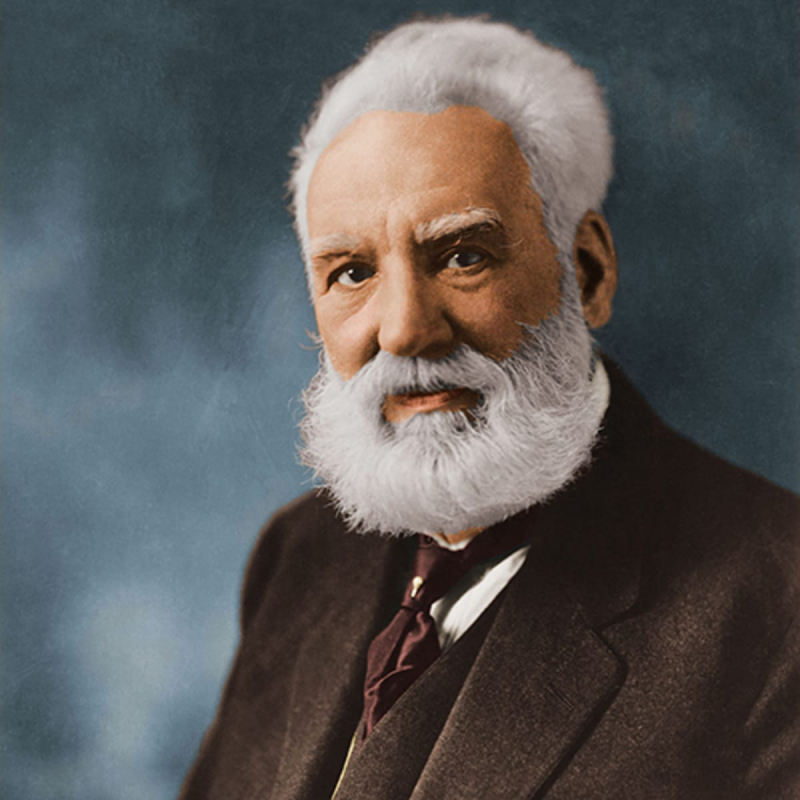
Photo: Mylaw -
One of the interesting facts about Alexander Graham Bell that you may not know, Bell won his patent for the telephone by filing his claim hours ahead of Elisha Gray.
On February 14, 1876, Bell submitted his patent for his take on the telephone. Later that day, a legal representative for Elisha Gray filed a caveat-a formal announcement of an invention on his behalf for the telephone. Bell had been aware of his rival's efforts and felt tremendous pressure to complete his own design, as he noted in a letter to his parents in 1874. According to Charlotte Gray's Reluctant Genius: "It is a neck and neck race between Mr. Gray and myself who shall complete our apparatus first."
Bell was granted the patent for the telephone in March 1876. The following year, he established the Bell Telephone Company alongside his father-in-law Gardiner Greene Hubbard, his employee Thomas Watson, and Thomas Sanders. Gray was among the inventors that Western Union, a rival, hired to create their own phone system. This sparked a legal dispute between the two companies. In numerous other court cases over the years, Bell vehemently defended his telephone patent.

Photo: www.history.com - Alexander Graham Bell Patents the Telephone 
Photo: Catawiki - Bell Telephone Company Vintage wall phone -
On June 3, 1880, just four years after receiving the telephone patent, Alexander Graham Bell was speaking wirelessly on top of the Franklin School in Washington, DC, sending his words over 213 meters on a mirror and a sunbeam. Bell called it the "photophone," calling it his most significant invention.
The transmitter focused light onto a parabolic mirror, much like a telephone, and the receiver picked it up. However, unlike a telephone, this system did not use electrical signals to communicate; instead, light was focused onto a parabolic mirror. When you spoke, the mirror shook in response, modulating the sunbeam and altering the amount of light that arrived at the receiver. When the light shone on the light-sensitive selenium, the light once more took on the form of speech.
Bell wanted to name his second daughter after the photophone because he was so happy with it, but fortunately for her, that didn't happen. Additionally, the photophone wasn't exactly a resounding success. Bell explained how inclement weather could prevent the photophone from working in that same letter to his wife: “Mr. Tainter and I have been mortified that cloud and rain have prevented us from making experiments with our huge diaphragm-mirror photophonic transmitter.” The photophone wasn't very effective when lit by a kerosene lamp, and by the late 1890s, a young Italian inventor named Marconi was testing a different wireless system that would essentially render the photophone project obsolete.
Bell's favorite invention, however, experienced a small comeback in the late 20th century when fiber optics brought back light-transmitted telecommunication. In order to commemorate the 100th anniversary of an invention that continued to live up to its creator's enthusiasm long after he had passed away, the Smithsonian was dusting off the photophone Bell had donated in 1980.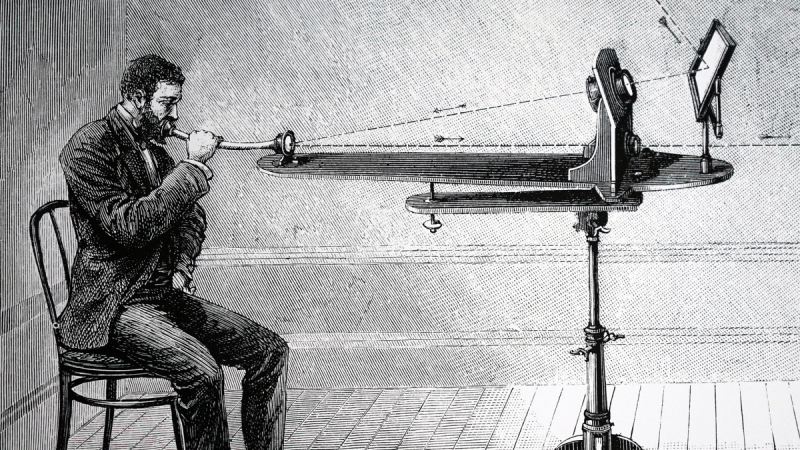
Photo: VICE - Alexander Graham Bell Made a Wireless Phone That Ran on Sunshine 
Photo: ThoughtCo - Alexander Graham Bell and the Photophone -
A hydrofoil is an underwater fin that resembles a ski and has a flat or curved surface that lifts a moving boat as it pushes against the water it is traveling through. Therefore, hydrofoils reduce the amount of time the boat is in contact with the water, which lowers drag at higher speeds. Despite the fact that hydrofoil designs date back to 1861, it took Italian inventor Enrico Forlanini until 1906 to build the first practical hydrofoil.
Bell and Casey Baldwin, his dependable manager, created the fastest hydrofoils between 1908 and 1920. Bell and Baldwin set out to create a "heavier than water" vehicle in 1908, when Bell was dabbling in aviation. They were probably influenced by Forlanini's work as well as the Scientific American article from March 1906 that described the fundamentals of hydrofoils. Bell and Baldwin's first hydrofoil, or "hydrobromide," the HD-1, was measured at nearly 72 km (about 45 miles) per hour in 1911. Bell and Baldwin completed the HD-4 hydrofoil in September 1919, after making a number of improvements and building two more hydrofoils. This hydrofoil set a speed record when it sped across Bras d'Or Lake in Nova Scotia at 114 km (70.8 miles) per hour.

Photo: Alexander Graham Bell Foundation - Hydrofoil - Alexander Graham Bell Foundation 
Photo: Garden of Praise - Alexander Graham Bell's Hydrofoil HD4 -
After serving as president for about four months, James Garfield was assassinated on July 2, 1881, by Charles J. Guiteau in a railroad station in Washington, D.C. The president was struck in the back by one of Guiteau's bullets, but doctors were unable to find it. The president would live for 78 days before succumbing, but not before doctors made several attempts to physically probe the president's body and remove the bullet. Simon Newcomb, a mathematics professor at the U.S. Naval Observatory in Washington, D.C., was aware that metal placed close to electrically charged coils emits a faint hum. He believed that a device he developed using these ideas could assist in locating the bullet that was lodged in the president. When a journalist asked Newcomb about his metal-detecting tool, Newcomb said that it needed improvement.
Bell contacted Newcomb after reading the article in the newspaper and offered to help. Newcomb and Bell collaborated to make some changes to Newcomb's invention, including the addition of Bell's phone to amplify the hum. Bell started looking for Garfield's bullet at the end of July, but in vain. Despite Garfield's passing in September, Bell went on to successfully demonstrate the tool, which was later adopted by surgeons and used to save the lives of wounded soldiers in both the Boer War (1899–1902) and World War I (1914–18).
Photo: Twitter - Alexander Graham Bell developed a metal detector as a last ditch effort to locate a bullet lodged in the chest of American President James Garfield in 1881 
Photo: Evrim Ağacı -
Another fact on the list of "interesting facts about Alexander Graham Bell," would you believe it, Alexander Graham Bell's voice on display at American History Museum.
The capital of the country was without a doubt the center of recording in the 1980s. Alexander Graham Bell relocated to Washington at that time to be nearer to the patent offices and the Smithsonian Institution, which assisted him in establishing his Volta Laboratory, after inventing the first usable telephone and inheriting hundreds of patent challenges in the process. He created a large number of the earliest sound recordings there.
In order to protect his patents well before the turn of the 20th century, Bell donated his inventions to the Smithsonian in sealed boxes. His descendants opened the boxes in 1937 to much fanfare. Bell's voice, recorded nearly 130 years ago, was broadcast for the first time a few years ago thanks to research done by scientists at the Lawrence Berkeley National Laboratory in California. They were able to do this by optically reading the grooves in Bell's recordings. The National Museum of American History has a new exhibit called "Hear My Voice: Alexander Graham Bell and the Origins of Recorded Sound" that includes that recording as well as others. The exhibit also includes tools, documents, and lab notes from Bell's Volta lab.
Photo: The Kojo Nnamdi Show - Early Sound Recording: The Voice of Alexander Graham Bell 
Photo: IEEE Spectrum - Particle Physics Resurrects Alexander Graham Bell's Voice -
Bell worked tirelessly to aid the deaf throughout his life, despite becoming famous for inventing the telephone.
Helen Adams Keller was born on June 27, 1880, in Tuscumbia, Alabama. Helen couldn't see, hear, or speak when she was a baby due to a brief illness, possibly scarlet fever or a type of bacterial meningitis. She was regarded as a smart, spoiled, and independent young girl. Alexander Graham Bell, the creator of the telephone and an expert on the deaf, was eventually consulted by her parents. He advised the Kellers to get in touch with the Perkins Institution, which in turn gave Anne Sullivan's recommendation as a teacher.
When Sullivan, then 20 years old, first arrived at Ivy Green, the Keller family estate, she set about trying to socialize her unruly, unyielding pupil and teach her by writing words in Keller's hand. Keller didn't understand the finger spelling at first. A breakthrough, however, came when Sullivan submerged Keller's hand in water using a pump while writing the word "water" in Keller's palm. Keller continued to pick up writing, reading, and speaking skills. Keller attended Radcliffe College with Sullivan's help and earned an honors degree there in 1904.Author and public speaker Helen Keller's first book, "The Story of My Life," was released in 1902. Bell and Keller remained lifelong friends. Keller dedicated her autobiography to Bell, whom she credited with opening the "door through which I should pass from darkness into light."

Photo: Perkins School For The Blind - Bell connected Helen Keller with Annie Sullivan Video: Grigoryvolkov - Helen Keller and Anne Sullivan -
By the time Alexander Graham Bell passed away, the number of telephones in the country had risen to over 14 million. On August 4, 1922, they all fell silent for a full minute.
Bell's funeral is the cause. The Bell Telephone System was established in 1877 by the American inventor who was also the first to patent telephone technology in the country. Bell wasn't the only person to create "the transmission of speech by electrical wires," according to Randy Alfred for Wired, but obtaining patent primacy in the US gave him the freedom to pursue invention throughout his life. Bell didn't stop there, even though the telephone fundamentally altered the world.
Bell died on August 2, 1922, a few days after turning 75. When his funeral started around 6:30 p.m. Eastern Standard Time, all telephone exchanges in the United States and Canada briefly shut down out of respect, according to Alfred. At the exact moment Bell was lowered into his grave, all telephone service in the US and Canada was shut down for a full minute. As the 13 million telephones on the continent fell silent, an army of 60,000 telephone operators silently stood at attention, refusing to connect any new calls.
The New York Times reported that Bell was also honored by deaf rights activists on the day of the funeral. According to Felix H. Levey, president of the Institution for the Improved Instruction of Deaf Mutes, "President Bell's conspicuous work in behalf of the deaf of this country would alone entitle him to everlasting fame, entirely apart from his monumental achievement as the inventor of the telephone."

Photo: Mass Moments 
Photo: Best Plus - Alexander Graham Bel










